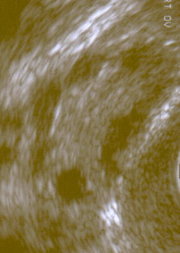In polycystic ovary syndrome, the triad of anovulation, infertility, and hyperandrogenism manifests clinically as hirsutism, acne, and irregular menstruation. Ten percent of women of reproductive age are affected, and about 40 percent of them develop impaired glucose tolerance or overt type 2 diabetes by 40 years of age. Lord and colleagues studied the effectiveness of metformin in the treatment of polycystic ovary syndrome.
The authors searched databases of clinical trials, the Cochrane register of trials, and the reference sections of all of the identified trials to access relevant clinical studies. Two independent reviewers assessed each trial for quality and, if necessary, authors were asked to provide unpublished data or clarifying information. Of the 20 trials initially identified, 13 met the criteria for inclusion in this review.
Five trials included information on pregnancy and reported that metformin therapy did not have any advantage over placebo in rates of conception, although the combination of metformin and clomiphene was significantly more effective than therapy with clomiphene alone. This combination also was significantly more effective than clomiphene alone for inducing ovulation. Both treatments were significantly superior to placebo. Metformin therapy did not benefit body weight, body mass index, waist circumference, or waist-to-hip ratio. In the two trials that monitored blood pressure, metformin therapy was associated with significant reductions in systolic and diastolic blood pressures. In biochemical measures, metformin therapy was associated with significant reductions in fasting insulin concentrations and low-density lipoprotein concentrations. No evidence was found of any effect on total cholesterol level, triglycerides, or high-density lipoprotein concentrations.
The authors conclude that metformin therapy is effective for inducing ovulation in women with polycystic ovary syndrome, achieving results in 46 percent of patients (equivalent to a number needed to treat [NNT] of 4.4). When metformin was combined with clomiphene, 76 percent of treated women ovulated compared with 42 percent when clomiphene was used alone (NNT of 3.0). Although metformin has some beneficial effects on the metabolic syndrome, they are small. No net effect on weight loss is apparent. Gastrointestinal side effects can limit the use of metformin, but no serious long-term adverse effects are known. Metformin's effect on pregnancy is unclear, and it should not be used if any degree of renal impairment is present because of the danger of lactic acidosis.
Lord JM, et al. Metformin in polycystic ovary syndrome: systematic review and meta-analysis. BMJ October 25, 2003;327:951-6.
COPYRIGHT 2004 American Academy of Family Physicians
COPYRIGHT 2004 Gale Group



